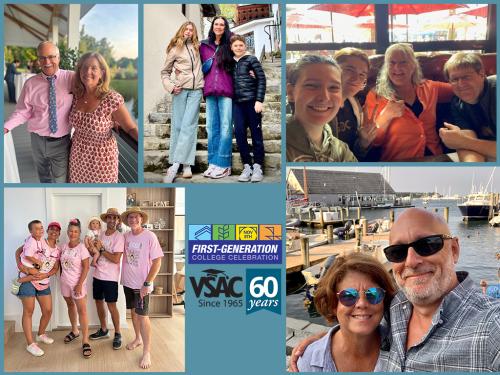Planning for college or training this year? Apply for the Vermont Grant.
Financial aid offers: 4 steps before you sign

For families with a high school senior, now is when most college acceptances arrive in full force (congratulations!), and with them, financial aid offers. It’s an exciting time and—let’s face it—also a bit overwhelming as deadlines loom: Most colleges require a deposit by May 1. That means that during April, families need to do math calculations and make some smart—and sometimes tough—decisions about which school is the best fit.
To help you interpret those financial aid offers (and take some of the stress out of the process), we’ve broken down four steps so you can better compare all your options and make informed choices. We want you to know more so you can borrow less. So before accepting financial aid offers (and buying college stickers for the car), follow these steps.
Review your financial aid offers carefully

The financial aid offers you'll receive from each school can vary widely. Different combinations of grants, scholarships, work-study, and other aid—including loans are options to cover education expenses. Review each offer carefully. VSAC has created a sample financial aid notification to help you decode all the parts of your offer.
Decode “financial-aid-speak”: Sample Financial Aid Offers
Hear first-hand on VPR how one Vermont student is navigating college financial aid letters.
NOTE: If you haven’t yet applied for financial aid, fill out both the FAFSA and the Vermont state grant. You won't know what you're eligible for if you don't complete the forms. There's money for college or training—but you have to apply!
Bring out the calculator

Add up your total college costs, including tuition and fees, housing, transportation, books, and personal items throughout the year. This is the best way to know your expected costs. All of these expenses are important to consider, and if they aren't listed in your offer, call the financial aid office.
Subtract all of your grants and scholarships. Both are "gift aid" and don't need to be repaid. Contact the school to see if the grants and scholarships will be renewed each year, or if you'll need to reapply. Also ask if there are specific requirements to keep each grant and scholarship (e.g., maintaining a specific GPA).
Work-study is another form of aid, except you earn money by working at a campus job). If work-study is on your offer, you may be able to subtract the offer from your education costs. Double check with your school to see how work-study funds are dispersed.
Calculate the remaining amount owed. After you've subtracted, free aid and work-study, this is how much, you'll need to pay for one year of college. Multiply this figure by the number of years needed for your degree.
Tip: Use VSAC’s Financial Aid Offer Comparison Tool to ease some of the stress of comparing different offers.
How can you close out your costs?

Once you know the amount of money you’ll need, think about how to cover those costs. You aren't alone if you don’t have that amount in a college savings account, you aren’t alone: Nearly two-thirds of Vermont families borrow education loans to cover college and career training costs.
Borrowing for student loans should be the last stop in covering your education costs. Student loans can vary and can come from the federal government or private lenders like banks and non-profits. But it's important to:
- research and compare student loan costs
- learn what to consider when looking at loan offers, and
- calculate your future monthly payments to decrease the lifetime cost of the loan while securing a healthy financial future for yourself.
Don’t accept loans until you compare and understand all your options. Download VSAC's My Education Loans (PDF) ![]() guide and learn how to choose education loans that meet your family’s needs.
guide and learn how to choose education loans that meet your family’s needs.
Understand the total cost of what you'll owe over time for the full repayment of the loan, and be sure you can afford the monthly payments.
Pick up the phone

Have you read through your offers and still have questions about your financial aid offer? You have two options to get answers.
- Contact the college’s financial aid office for specifics.
- Contact VSAC—as Vermont’s nonprofit higher education resource for students, we’re here to answer your questions. To speak to a counselor, call us at 1-833-802-8722 (1-833-802-VSAC) for help Monday through Friday, 8:00 am–4:30 pm, or schedule an appointment to talk with a financial aid counselor at our Resource Center in Winooski.
Ultimately, you’ll want to choose the school that will give you the best educational experience and minimal longterm financial responsibility post-graduation. Learning what you need to know—before you sign on the dotted line—will go a long way toward making the choice that’s best for you and your family.




